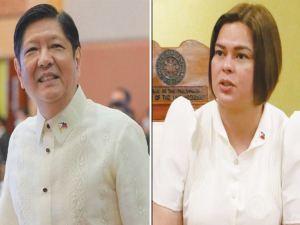A photo of a volleyball player from Ateneo de Manila University became the subject of sexual remarks mostly from men because of her fitted uniform.
The photo was posted on the fan page of AdMU’s volleyball team early in April but had since been deleted. Concerned users were able to make screenshots of the offensive comments and called for them to stop sexualizing women based on clothing.
The comments placed under the photo of a student athlete wearing a sweater and shorts contain messages suggestive of online harassment.
Twitter user @marie_analain pointed out that volleyball players wear the uniform that are mandated by official rules and so that they could move comfortably.
“Because of guys like them, do you think we can play properly knowing that there are guys with that kind of mindset?” she said.
The photo was taken during the team’s match against the University of the East based on the schedule of the UAAP Season 81 women’s volleyball competition.
Standards for volleyball uniforms
Volleyball players whether male or female wear shorts and jerseys to help them move when training and during the game.
The Fédération Internationale de Volleyball, the governing body of the sport, dictates that jerseys should have an “athletic look.”
“Player uniform consists of jersey (shirt), short, training suit and socks, and must be same for the whole team,” the FIVB said.
“Jerseys must not be loose or baggy and should follow the bodyline,” it added.
Jerseys should also be collared. However, this requirement is not followed in uniforms in the Philippines.
Meanwhile, shorts for women should “fit the bodyline, tight in waist and length.” The piece of clothing should also have an “inseam of maximum 5 cm or cut in an upward angle towards the top of the leg.”
“Women are allowed to use a one piece uniform if the standards for jersey and shorts are met,” the agency said.
Wearing tight shorts is also beneficial for Filipino players when playing under the summer heat.
The Cybercrime Prevention Act of 2012 that prevents forms of crimes in cyberspace does not have a specific provision against cyberbullying.
The Anti-Sexual harassment Act of 1995 that punishes sexual harassment at work, in training and in educational institutions also do not include acts of online harassment. (C.R Madarang, Interakson)








